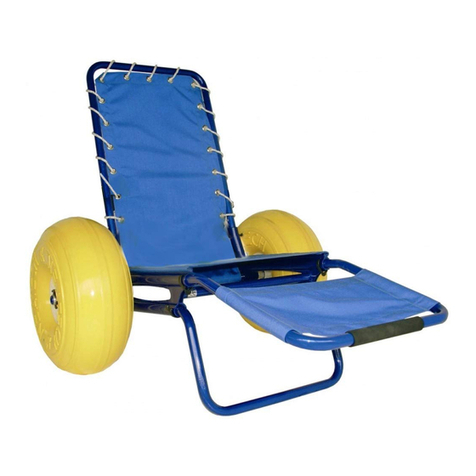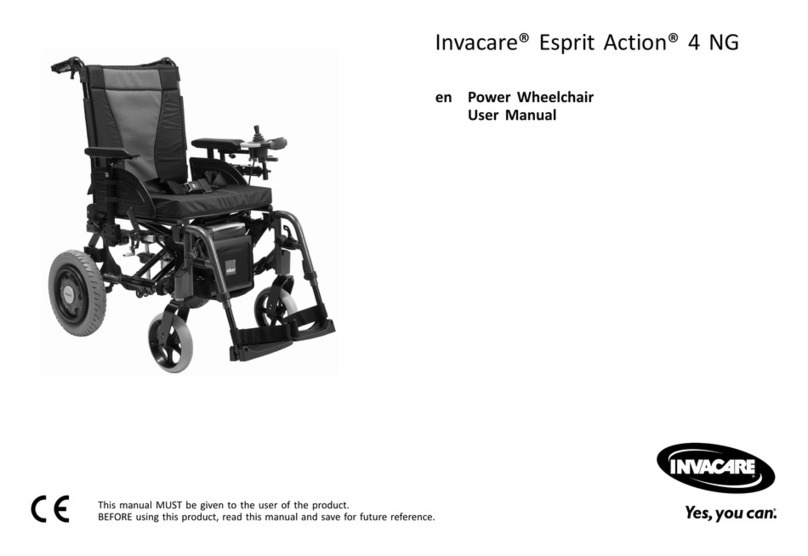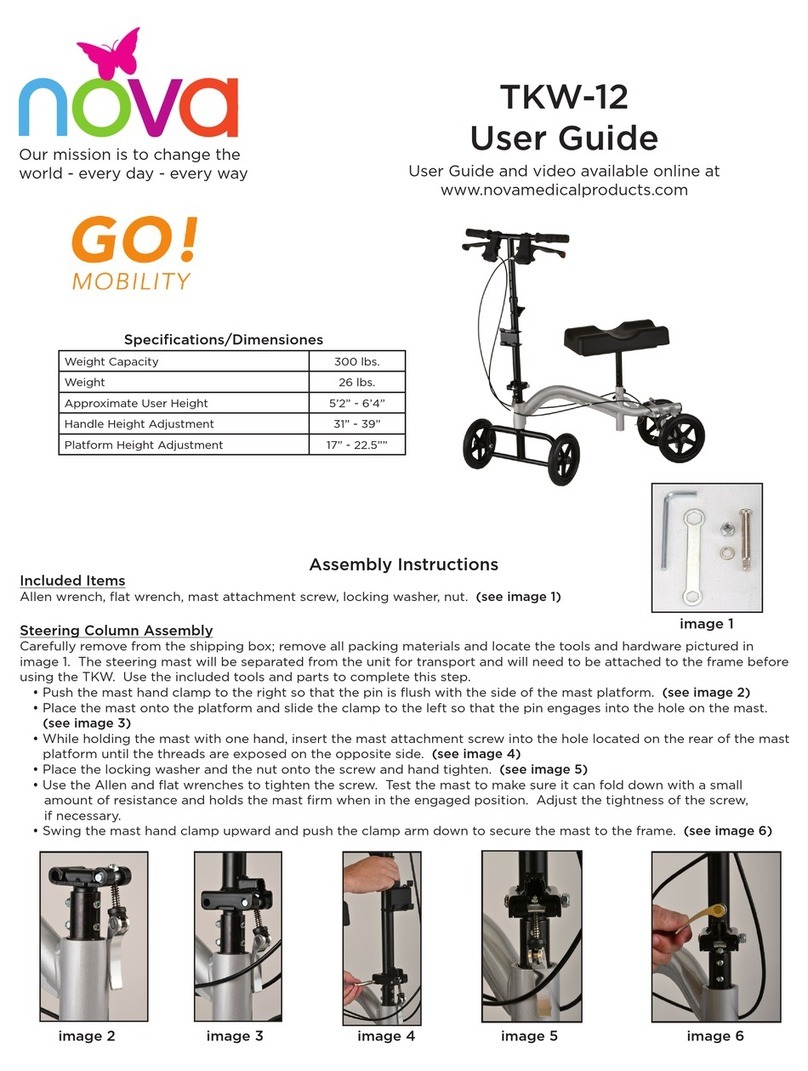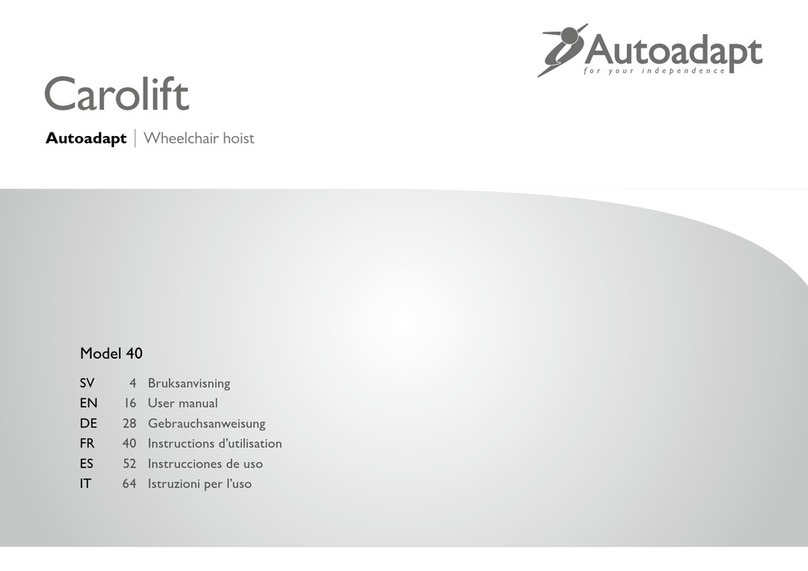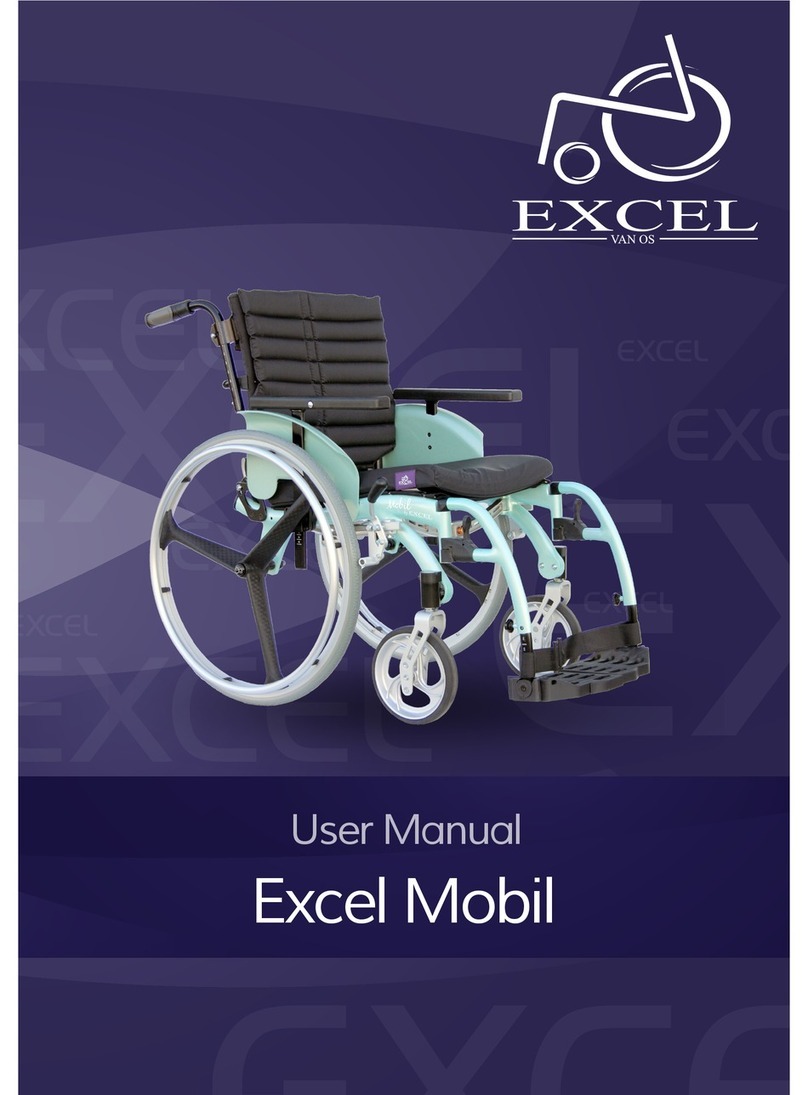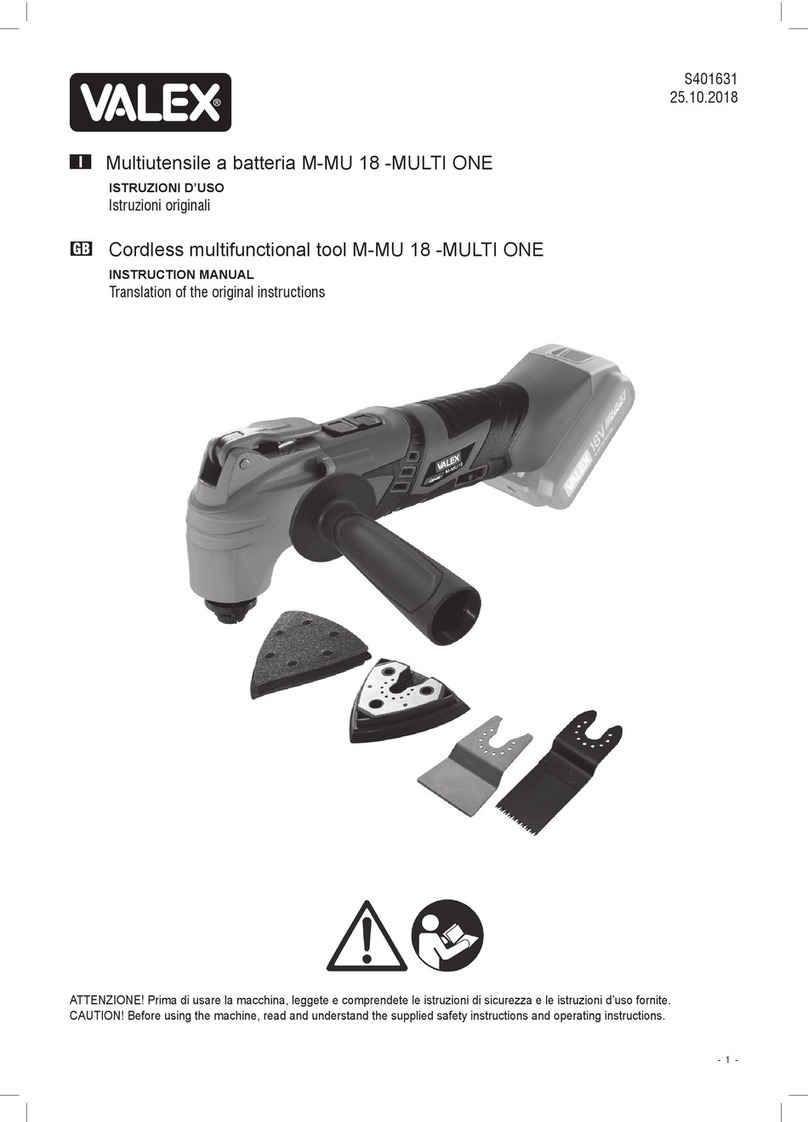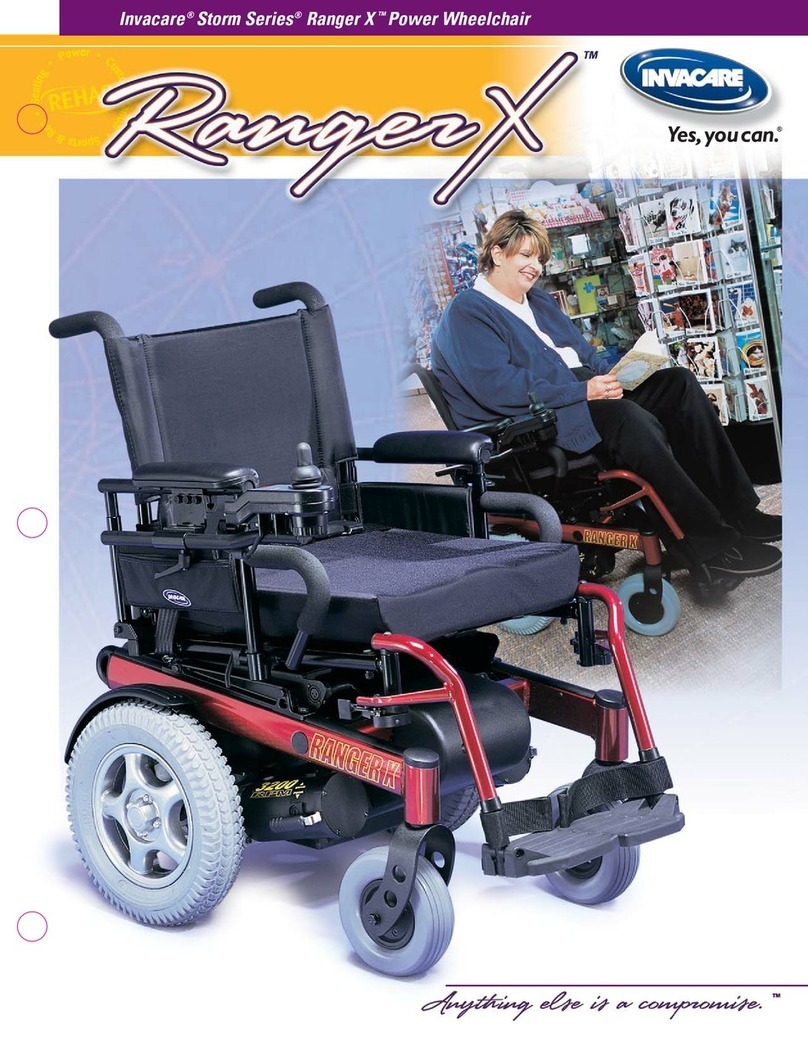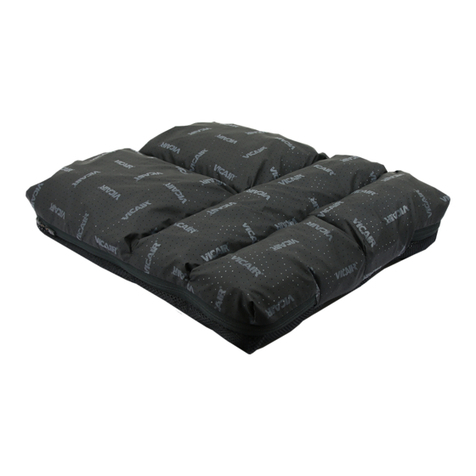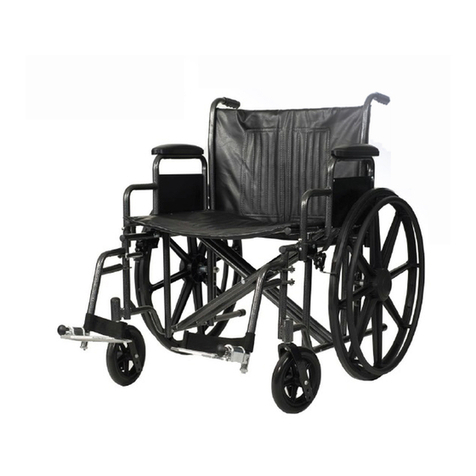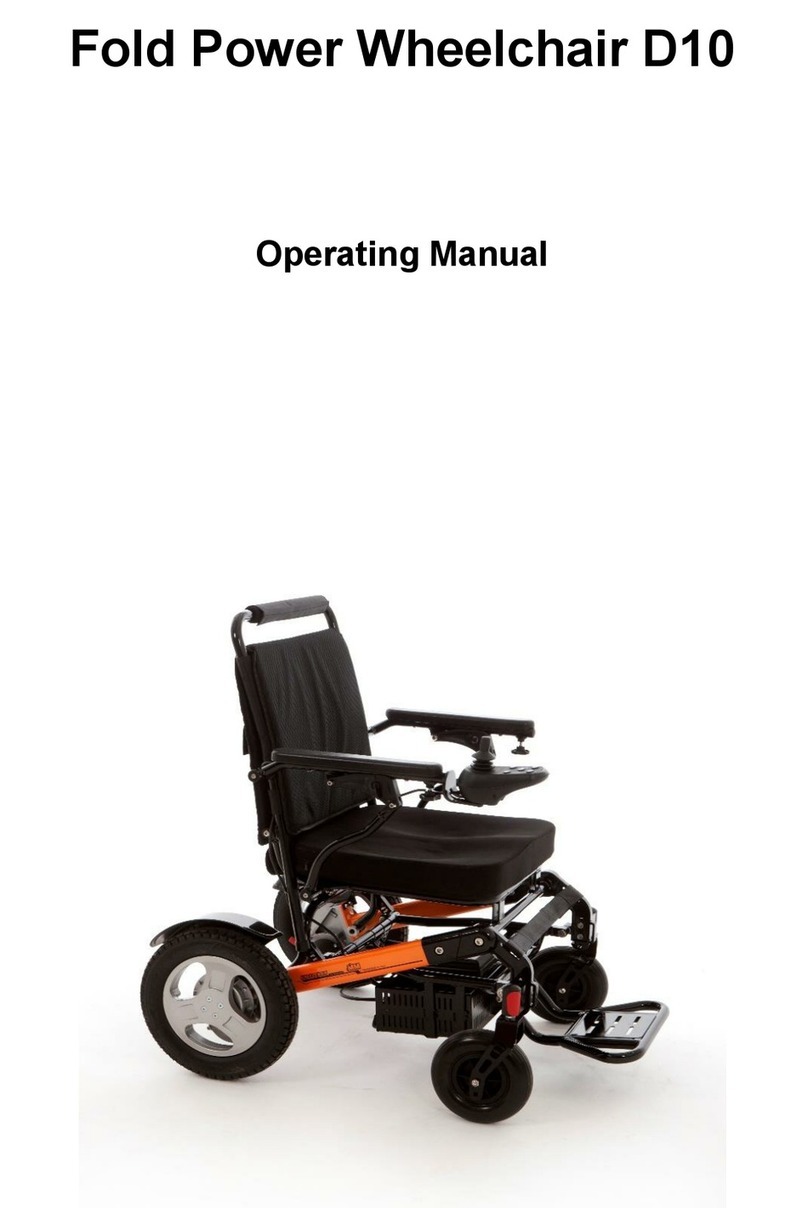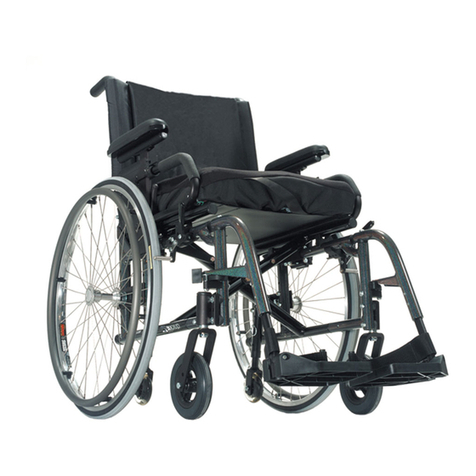IDEAL 700 002 User manual

HERDEGEN SNC 2, Rue Freyssinet 77500 CHELLES-FRANCE 08/08/2017 Rev. 1 (27/09/2017)
Créateur d’Autonomie
Ideal
Créateur d’autonomie
User manual

HERDEGEN SNC 2, Rue Freyssinet 77500 CHELLES-FRANCE 08/08/2017 Rev. 1 (27/09/2017)
Distance
between
armrest
37 cm
Height armrest to
seat
18.5 cm
Height footrest
to oor
13 cm
Total height
86 cm
Seat depth
33 cmø 10 cm ø 15 cm
Wheels diameter
31 cm
Depth when folded
Backrest height
32 cm
Seat width
44,5 cm
Height seat to
oor
43 cm
Overall width
44 cm
73 cm
Height when folded
Backrest width
31 cm
Total depth
86 cm
Description Description Bezeichnung
AFront castors Roues avant
BFootrest Repose pied
CFront frame Châssis
DSeat Assise
EArmrests Accoudoirs
FHandles Poignées
GBrakes Freins
HBackrest Dossier
ISafety belt Ceinture
JBack wheels Roues arrière
IDEAL Ref 700 002
100kg
12kg

HERDEGEN SNC 2, Rue Freyssinet 77500 CHELLES-FRANCE
08/08/2017 Rev. 1 (27/09/2017) 08/08/2017 Rev. 1 (27/09/2017)
A B
C D
E F
G

HERDEGEN SNC 2, Rue Freyssinet 77500 CHELLES-FRANCE 08/08/2017 Rev. 1 (27/09/2017)
PREAMBLE
A prior reading of this guide will allow you to be aware of the characteristics and essential recommendations to use and optimally maintain
your transport chair IDEAL. Don’t use this transport chair before a prior reading of this manual. Always proceed with a general inspection of your
transport chair before use. If you are not certain of one of the aspects of your chair, please contact your closest distributor. As a certied profes-
sional, they will be able to advise you and check your transport chair before and after use.
SUMMARY
1. PURPOSE AND RE-USE OF THE CHAIR
1.1 Intended use
1.2 Indications and contraindications
1.2 Reuse & rental
2. CONDITIONS OF USE
2.1 Inspection before use
2.2 Indoor use
2.3 Outdoor use
2.4 Transport of the chair
2.5 Risks of pinching
2.6 Spare parts
3. RECEPTION AND DESCRIPTION
3.1 Reception
3.2 Product description
3.3 Installation
4. ADVICES FOR AN APPROPRIATE USE
4.1 Support belt
4.2 Braking
4.3 Locking of the backrest
4.4 Footrest adjustement
4.5 Stability in movement or stopped
4.6 Obstacle clearance
4.7 Transfer
4.8 Opening and closing of the chair
5. MAINTENANCE INSTRUCTIONS AND DAY-TO DAY ADJUSTEMENTS
5.1 Maintenance, adjustment and regular inspection
5.2 Storage and use conditions
5.3 Cleaning
6. ANNUAL MAINTENANCE, REPAIRS, WARRANTY
6.1 Inspections and repairs
6.2 Storage
6.3 End of life of the product
6.4 Warranty conditions
7. CHARACTERISTICS AND RECOMMENDATIONS
7.1 Essential characteristics of the chair
7.2 Recommendations
GENERAL SAFETY INSTRUCTIONS
•ALWAYS consult with your physician or supplier to determine proper adjustment and use of the device.
•Don’t store outside and don’t let under the sun (Beware : don’t let the product in a car in case of high outside temperature !!).
•Don’t use in extreme temperature (above 38°C or 100°F or below 0° or 32°F).
•Check carefully all parts of this item (screws, tubes, tips, grips..).
•Check regularly if all screws are tightened.
•Check before each use if the chair is in a perfect state.
•Use only as a transfer chair and in proper way : don’t knee or stand on the product, don’t seat on the armrests.
•ALWAYS observe the weight limit on the labelling of your product.
•After unfolding or assembling the transfer chair, make sure that it is securely locked in OPEN position and level to the ground before using.
•DO NOT hang anything on the chair.
•ALWAYS test to see that the walking aid and attachments are properly and securely locked in place before using.
•Nomodicationmustbemadeonthisdevice.Useonlyoriginalpartstoreplacethebrokenordefectoneandletthisbedonebythetechnicalstaff.
•In case you didn’t use your chair for a long time, let it checked by the technical staff, before using.
•Becarefulwhenusing:bewareholesanddeformationsintheoor.
•Becareful:riskofcrushingandsqueezingngerswhenfolding/unfolding.
•Any serious incident that has occurred in relation to the device shall be reported to the manufacturer and the competent authority of the Member
Stateinwhichtheuserand/orthepatientisestablished.
•Lift the footplates up before getting in or out of the chair.
•Please note that redistribution of weight due to body movements or loading the wheelchair can increase the risk of tipping over.
•Avoid wheeling against obstacles (steps, kerbs) at speed or jumping down steps.
•Never stand on the foot plates to get in and out.

HERDEGEN SNC 2, Rue Freyssinet 77500 CHELLES-FRANCE
08/08/2017 Rev. 1 (27/09/2017) 08/08/2017 Rev. 1 (27/09/2017)
1. PURPOSE AND RE-USE OF THE CHAIR
1.1 Intended use
Our IDEAL transfer chair is meant to accompany and move from one place to another people who don’t have specic postural problems and
whose weight doesn’t exceed 100kg. This chair is not conceived for very young children or patients whose weight is inferior to 40kg or for other
uses than the transport of a person. This chair needs the presence of a third person, responsible and physically able to push the chair.
The IDEAL chair is a light chair, easily manoeuvrable and usable on plain surfaces indoors and outdoors. Foldable, its footprint is reduced to allow
the chair to be transported and stored easily.
Only healthcare professionals are entitled to prescribe and recommend our IDEAL chair in order to use it in accordance with patient’s needs.
The adaptation and the adjustments of the chair must be done by a certied professional.
1.2 Indications and contraindications
Indications:
-Durable, partial or total loss of strength in the lower limbs, balance disorders or posture problems due to various causes: post-traumatic, pos-
toperative, degenerative, inammatory, neurological or neoplastic diseases, as well as -Congenital malformation, deformation or functional
disorders.
-Severe impaired mobility requiring to partially or totally unload weight-bearing on one or both legs or a body part, following an accident, an
operation or a disease.
Contraindications:
This product is contraindicated in case of:
- cognitive disorder, dementia - loss of balance - general muscular insufciency - severe coordination disorder
1.3 Reuse & rental
If used by different persons, the IDEAL chair must be inspected in order to be, if appropriate, maintained and adjusted by a certied professional
for the new user. The instruction manual, as well as the documents and original labels must be provided with the chair to the new user.
This product can be rented to different patients. A thorough maintenance, cleaning and disinfection must be performed before the product is
given to a new patient in accordance with the following steps:
1-Visual inspection: ensure that the product has not been damaged and check for any defect.
2-Functional inspection: ensure that the product functions properly and repair it if needed.
3-Cleaning and disinfection: this product can be cleaned and disinfected with mild, chlorine-free detergents such as Survanios (Anios labora-
tories).
Do NOT use any abrasive cleaners or high-pressure cleaners that could damage the product.
Use only appropriate tools to perform the maintenance, cleaning and disinfection.
The user’s manual is an integral part of the product and must be handed over to every new user.
2. CONDITIONS OF USE
2.1 Inspection before use
Before each use, the user or the companion must check that the wheels, their rubber tyre and their bearings are in good condition and that the
brakes allow an efcient immobilization of the chair. Never use the chair if one of the clamping element is unscrewed, if a wheel or a part of the
chair is suspected of presenting backlashes or if elements from the seat are torn or disjointed. Never use the chair if it is not in good condition.
2.2 Indoor use
When moving the chair, one must take into account, in addition to its dimensions, the objects and obstacles in order to avoid to hinder, or hurt
the patient or the companion in their movements
2.3 Outdoor use
Used outdoors, attention must be paid on meteorological conditions as well as the condition of the oor in order to avoid adhesion risks, sliping
and tilting that could prejudice the user and his or her companion. Never use the chair in an escalator.
2.4 Transport of the chair
It is not advised to lift the chair with the patient sitting on it. To transport the chair, fold up the chassis and lift it up using stable elements of the
structure (armrests, handles, frame). Don’t use the footrests or the wheels to carry this operation.
When transported in a vehicule, it is advised to remove the footrests to reduce the chair’s footprint to store it easily in a trunk. The chair must never
be substituted to the vehicule’s own seats. The patient must be transfered from the chair to the vehicule’s seat while having taken care of locking
the brakes beforehand.
2.5 Risks of pinching
When installing or storing the chair, attention must be paid on avoiding potential pinching linked to adjustment, footrests, dissembly of wheels,
folding of the seat. Ask your certied distributor, who will explain how to manipulate your chair without danger.
2.6 Spare parts
The substitution of defective or altered parts must be made by a professional with manufacturer’s approved spare parts only. Replacement with
non-compliant parts can be risky for the patient and can have the manufacturer’s warranty cancelled.
3. RECEPTION AND DESCRIPTION
3.1. Reception
Our IDEAL transfer chairs are controlled at different steps of their production and packed in a cardboard packaging. Upon receipt, please
check that the packaging is not damaged. When unpacking the product, make sure that the instruction manual and the warranty booklet are
present. These documents are to be delivered to the user imperatively for him or her to be aware of the use conditions and the warranty of the
product.
After having checked the conformity of the chair, the certied professional will adjust the footrests according to the user’s height, as well as the
strap that is used as a support belt. It is the professional’s responsability to inform and make sure that the user understood well the safety or use
instructions and warnings described in this instruction manual. Environment : Recyclable, the cardboard packaging must be taken to a sorting
center.
Table of contents
Languages:

